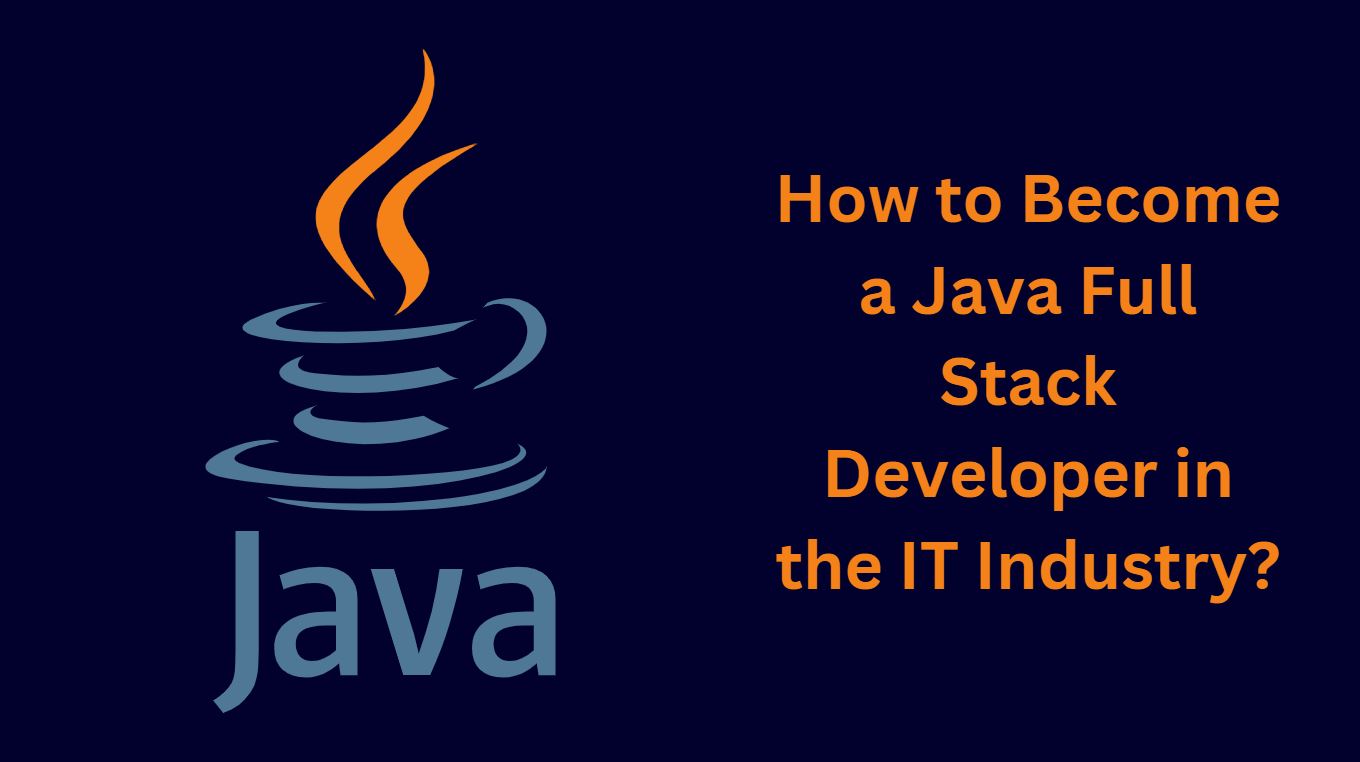How to Become a Java Full Stack Developer in the IT Industry?

It is crucial to have Java Full Stack Developer, to build stable and robust online applications given the dynamism of the current IT sector. Meanwhile in this article, I will help you to better understand how it is to become a Java Full Stack Developer, what skills you need and what careers are waiting for you in this incredibly promising field.
Prospective Requirements to Become a Java Full Stack Developer
1. Mastering the Fundamentals
It is essential to understand that the journey of a Java Full Stack Developer is starting with building up the foundation of programming. It is suggested that one learn the basics of using Java first, including data practices algorithms, and what OOPs mean. Also, become acquainted with the modern frameworks that are back end like Spring Boot and Hibernate at the same time knowing the front end technologies like HTML, CSS, and JavaScript.
2. Front-End Development
A strong focus on front-end development is implied by the basic responsibilities of a Full Stack Developer. Expand your understanding of specific front end frameworks and tools commonly used for building more engaging interfaces like Angular, React or Vue.js. For engaging and compelling web applications learning such things as web accessibility, responsive design principles, and user interface (UI) / user experience (UX) best practices is helpful.
3. Back-End Development
Handling data operations and creating server-side logic requires in-depth understanding of back-end technology. Use Java EE or the Spring Framework to dive into server-side development and learn about RESTful APIs, managing databases, and security protocols. Get hands-on expertise with NoSQL databases like MongoDB and relational databases like MySQL or PostgreSQL.
4. Database Management
A solid understanding of database management is essential for Java Full Stack Developers. Acquire knowledge of SQL (Structured Query Language) to perform searches and modify data in relational databases. To guarantee effective data storage and retrieval, explore transaction management, normalization strategies, and database architecture principles.
5. DevOps and Deployment
This is to explain you how DevOps utilizes concepts and tools to improve the efficiency of the development, testing, and deployment of software. Learn more about implementation of CI/CD pipelines, version control tool like Git, along with containerization tools Docker and Kubernetes. Learn about the best practices of deploying web applications to cloud platforms including Google cloud, AWS, and Azure.
6. Ongoing learning and growth
As technology changes continuously, the frameworks, tools, and trends should be constantly updated based on the recommendations. Forum, Blogs, Tutorials, Workshops & Online Courses are tools that can be used for carrying further learning. Develop experience by joining open source projects, coding boot camps and hackathons as a way of applying what you learn in class.
Through commitment to this strategy and consistent skill development, you can start a fulfilling path toward becoming a skilled Java Full Stack Developer in the field of IT. You can access fascinating job and career opportunities and help develop innovative web solutions with commitment, tenacity, and a passion for learning.
Image credit- Canva
Discover more from Newskart
Subscribe to get the latest posts sent to your email.


Comments are closed.